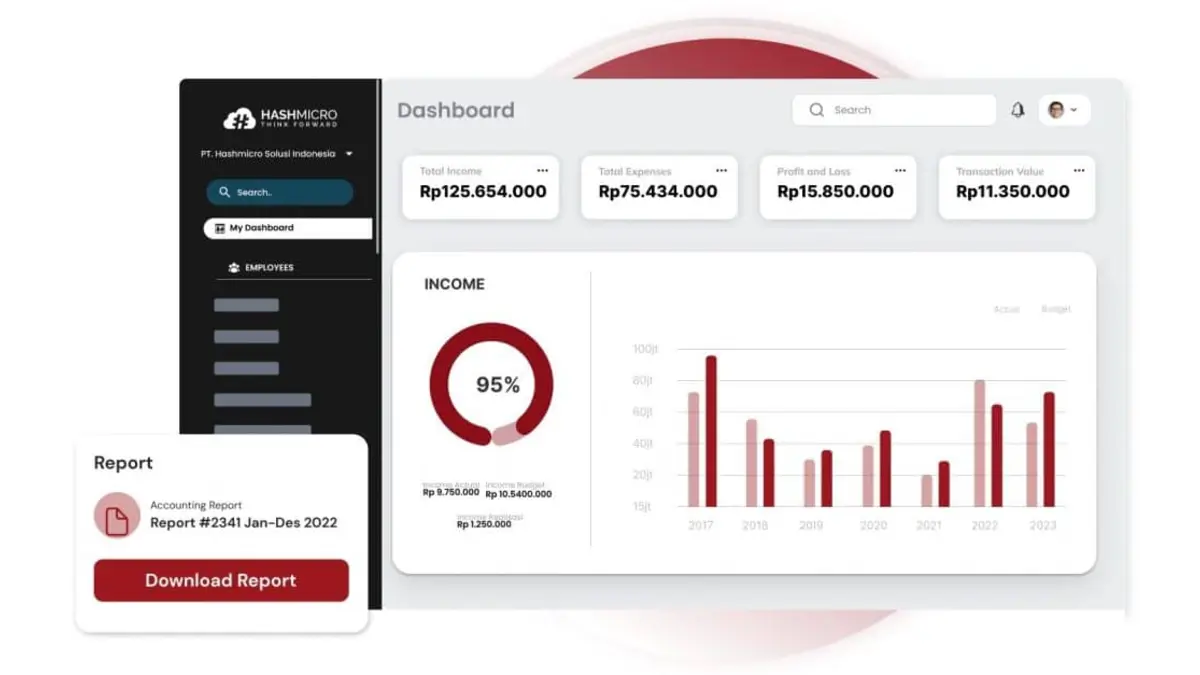Managing cash flow is crucial for Filipino businesses, yet many overlook the significance of Accounts Payable (AP) and Accounts Receivable (AR). AP represents the money owed to suppliers, while AR tracks what customers owe you. Together, they determine cash flow and directly impact financial stability.
Philippine business owners must handle AP and AR efficiently to maintain good supplier relations and ensure timely customer payments. Effective management of both ensures consistent cash flow, helping avoid penalties and sustaining business growth. Understanding these key financial elements is essential for long-term success.
Key Takeaways
|
Table of Contents

What Is Accounts Payable (AP)?

Accounts Payable (AP) represents the short-term liabilities a business owes for purchases made on credit from suppliers. This encompasses raw materials for production, office supplies, and various services. The amount is recorded as accounts payable when a business buys goods or services without immediate payment. Effective AP management ensures smooth supplier relationships and favorable credit terms.
Consider a retail store in the Philippines that orders inventory from a local supplier on credit. The supplier delivers the goods with an invoice indicating payment is due within 30 days. Until payment is made, the owed amount is categorized as accounts payable in the store’s records. Proper AP tracking helps maintain positive credit ratings and financial stability.
How to Record Accounts Payable
Accurately recording accounts payable is crucial for tracking debts and payment deadlines. Enter invoice details such as the supplier’s name, invoice number, amount due, and payment date to stay on top of payments and avoid late fees.
Tracking AP is essential for effective cash flow management and financial stability. Large businesses often use accounting software to automate this process, ensuring timely payments and better liquidity management. In the Philippines, adopting such software can help preserve strong supplier relationships and enhance your business’s competitive edge.
What Is Accounts Receivable (AR)?

Accounts Receivable (AR) represents the money customers owe your business after purchasing goods or services on credit. When extending credit to customers, your business creates an AR entry in its records, reflecting the expected payment. This entry is crucial for tracking amounts owed and ensuring timely collection. Managing AR effectively is essential to maintaining a healthy cash flow.
For example, a local furniture maker in the Philippines records a client’s credit purchase as accounts receivable. This entry stays in the business’s books until the client pays the invoice. Proper AR management helps the business collect payments on time, supporting financial stability.
How to Record Accounts Receivable
Properly recording accounts receivable involves entering details of each credit sale into your accounting system, including the customer’s name, invoice number, the amount owed, and payment terms. This helps you monitor outstanding balances and follow up on overdue payments.
Managing AR effectively is crucial for sustaining your business’s revenue and cash flow. In the Philippines, diligent AR practices help preserve customer trust and encourage timely payments. Integrating accounting software, like those from HashMicro, can enhance your AR management by automating tracking and identifying potential cash flow issues early. For a more efficient approach to financial management, you can explore the benefits of HashMicro’s solutions with a free demo.
Accounts Payable vs. Accounts Receivable: Key Differences
What do Accounts Payable and Accounts Receivable Have in Common?
Why Are Accounts Payable and Receivable Important?
Managing accounts payable (AP) and receivable (AR) is crucial for sustaining your business’s financial health and stability. Proper AP management ensures timely payments, avoiding penalties and maintaining your credit rating. Efficient AR management secures steady cash inflow, vital for covering expenses and driving growth. Regular accounts reconciliation is essential to verify that AP and AR records match with bank statements and other financial documents. In the Philippines, where economic conditions can be volatile, controlling both AP and AR through diligent reconciliation is key to avoiding cash flow issues and ensuring long-term business success.
One of the major benefits of using accounting software is the ease it brings to AP and AR management. While numerous software options are available, HashMicro stands out in the Philippines for its user-friendly features that streamline these processes. This ease of use enhances operational efficiency, improves cash flow predictability, and provides greater flexibility in navigating market challenges, thereby significantly contributing to your business’s financial stability and growth.
HashMicro’s Accounting Software for Easy Cash Flow Management

When it comes to managing your accounts payable and receivable, having the right tools, like reliable accounts payable software, can make all the difference. HashMicro’s accounting software is designed to simplify these processes, offering Philippine businesses an all-in-one solution for effective cash flow management. Whether you’re struggling with timely payments to suppliers or need to track customer invoices, HashMicro can streamline it all, ensuring that your business operates smoothly and without financial stress.
Key Features of HashMicro’s Accounting Software:
- Automated Accounts Payable Tracking: Never miss a payment deadline again with automatic invoice management and payment reminders.
- Efficient Accounts Receivable Monitoring: Easily track unpaid invoices and send automated follow-ups to customers for quicker payments.
- Real-time Cash Flow Analysis: Get instant insights into your cash inflows and outflows to maintain a balanced financial ledger.
- Customizable Payment Terms and Discounts: Set flexible payment terms and offer early payment discounts to encourage prompt transactions.
- Seamless Integration with Other Business Systems: Integrate your accounting with inventory, procurement, and sales for a unified financial overview.
By using HashMicro’s accounting software, your business can avoid common financial pitfalls and instead focus on growth and profitability. Trusted by businesses across the Philippines, HashMicro is the top choice for those who want reliable and comprehensive financial management.
Conclusion
In summary, managing accounts payable (AP) and receivable (AR) is essential for maintaining your business’s financial health. By understanding the roles of AP and AR and applying best practices, you can enhance cash flow, strengthen relationships with suppliers and customers, and build a more resilient business. Effective management of these accounts ensures timely payments, improves cash inflow, and supports long-term growth.
One of the major benefits of using accounting software is the simplification it offers for AP and AR management. HashMicro’s accounting software excels in this area, providing user-friendly features that streamline these processes and boost operational efficiency. To experience these benefits firsthand, sign up for our free demo and see how HashMicro can help your business thrive.
Frequently Asked Questions
-
What is the role of accounts payable and receivable?
Accounts payable manage outgoing payments your business owes to suppliers. Accounts receivable track incoming payments owed to your business by customers. Together, they ensure smooth cash flow management, balancing liabilities and assets to maintain financial stability.
-
Do I send an invoice to accounts payable or receivable?
You send an invoice to accounts payable if you are billing a company for goods or services. Accounts receivable, on the other hand, receive invoices from customers when your business is owed payment for products sold or services rendered.
-
Who pays accounts receivable?
Customers pay accounts receivable. It represents the money customers owe your business for goods or services sold on credit. Accounts receivable are tracked until full payment is received, ensuring consistent cash inflow for your business.
-
Can the same person do accounts payable and accounts receivable?
Yes, one person can manage both accounts payable and receivable in small businesses. However, larger companies usually separate these functions to maintain accuracy, prevent fraud, and improve internal controls.





































